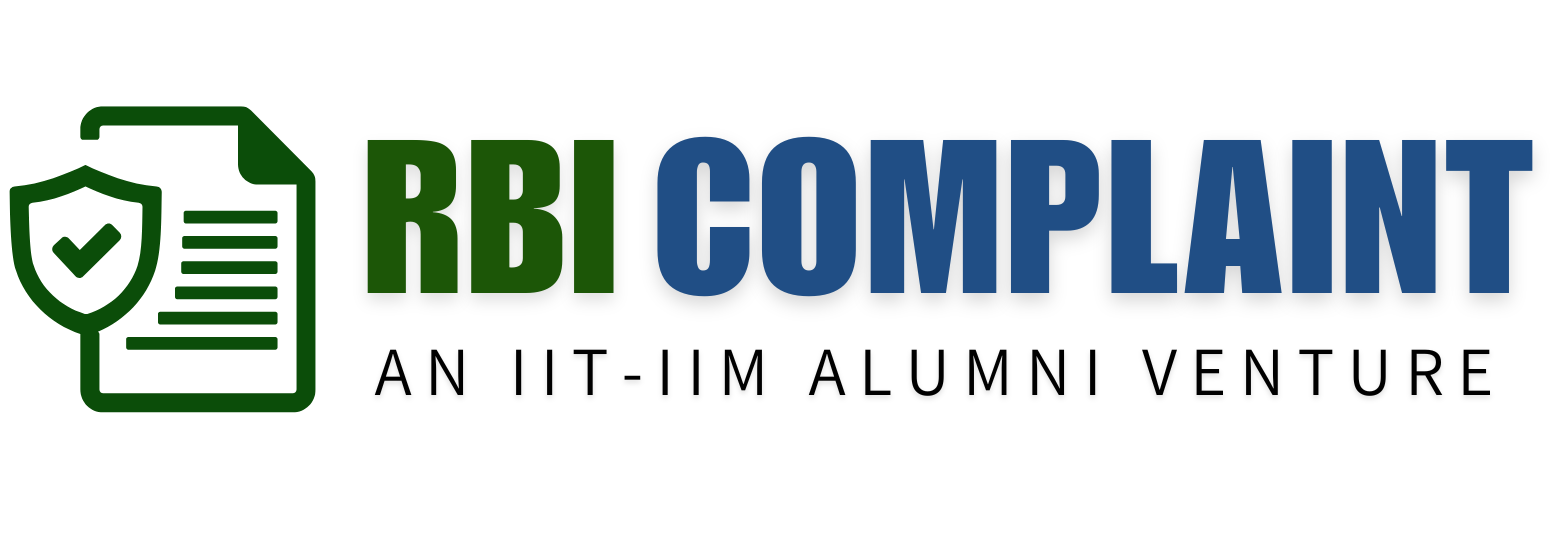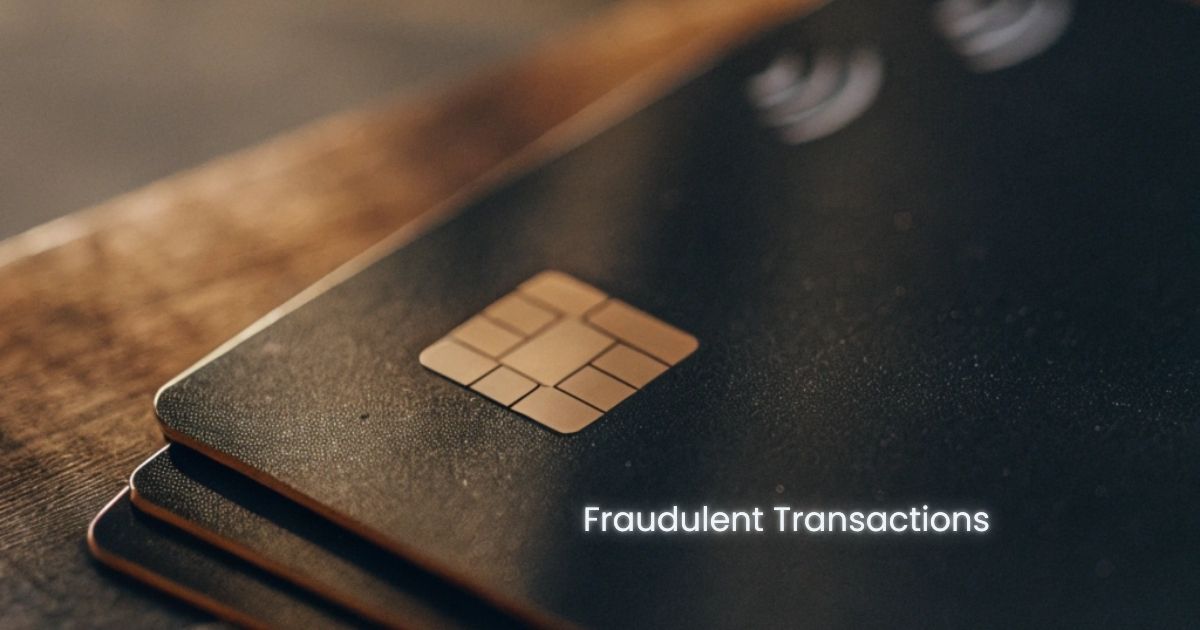· Banking Fraud · 5 min read
How to Report Unauthorized Bank Transactions to the RBI
Learn how to report unauthorized bank transactions to the RBI quickly and effectively. Understand the complaint process, timelines, and your rights as a customer.

Unauthorized transactions in your bank account can be distressing and financially damaging. When you discover unexpected withdrawals or charges, taking prompt action is crucial to protect your finances and rights as a banking customer. The Reserve Bank of India (RBI) has established a structured framework for addressing such grievances, ensuring that affected customers have clear pathways to report and resolve these issues.
Understanding Unauthorized Transactions
Unauthorized transactions can occur in various forms:
ATM withdrawals you didn’t make
Debit or credit card transactions you don’t recognize
Fraudulent online banking transfers
Duplicate or erroneous merchant charges
Transactions resulting from phishing, skimming, or other cybercrimes
Unauthorized UPI payments or mobile banking transfers
These transactions might result from card theft, data breaches, identity theft, or technical errors within the banking system itself.
RBI’s Customer Protection Policy
The RBI has implemented a comprehensive “Customer Protection Policy” specifically addressing unauthorized electronic banking transactions. This policy defines:
Zero Liability: Customers bear no responsibility for unauthorized transactions if they notify the bank within 3 working days of receiving the alert
Limited Liability: Specified liability caps based on how quickly the customer reports the incident
Timeline for Resolution: Banks must credit the amount involved in unauthorized transactions within 10 working days of reporting
Step-by-Step Process to Report Unauthorized Transactions
Step 1: Act Immediately
As soon as you notice an unauthorized transaction:
Block your debit/credit cards through your mobile banking app, net banking, or by calling the bank’s customer service
Change your online banking passwords and PINs
Document the transaction details, including date, amount, and any reference numbers
The speed of your reporting directly impacts liability protection under RBI guidelines.
Step 2: Report to Your Bank First
The RBI mandates that your first point of contact should be your bank:
Call the Banking Helpline: Contact your bank’s 24/7 customer service number (typically printed on your debit/credit card)
Visit Your Branch: For detailed assistance, visit your home branch with identity proof and account details
Submit a Written Complaint: File a formal written complaint providing transaction details, your contact information, and account particulars
Online Complaint: Use your bank’s website or mobile application to register a complaint
Email the Nodal Officer: Send your complaint to your bank’s designated Nodal Officer for grievance redressal
When filing your complaint, include:
Your full name and account details
Transaction specifics (date, time, amount)
How you discovered the unauthorized transaction
Any communication received about the transaction
Whether you were in possession of your card/device at the time
Request for immediate reversal of the transaction
Obtain and safeguard the complaint reference number for future correspondence.
Step 3: Escalate to the Bank’s Principal Nodal Officer
If your bank doesn’t respond within 10 days or provides an unsatisfactory response:
Escalate your complaint to the Principal Nodal Officer of the bank
Include your previous complaint reference number
Attach copies of all prior communication with the bank
Step 4: Approach the RBI Banking Ombudsman
If your issue remains unresolved after 30 days of contacting the bank or if you’re dissatisfied with the resolution, you can approach the RBI Banking Ombudsman:
Find Your Ombudsman: The RBI has designated Banking Ombudsmen for different regions of India
File Your Complaint through:
Online Portal: The Complaint Management System (CMS) portal at https://cms.rbi.org.in
Email: Send your complaint to the relevant regional Ombudsman office
Physical Mail: Submit a complaint letter to the appropriate Ombudsman office
Mobile App: Use the RBI’s “Sachet” app
Your complaint should include:
Personal and bank account details
Nature and date of the unauthorized transaction
Chronology of steps taken with the bank and their responses
Copies of all previous correspondence
Specific relief sought
A declaration that the matter isn’t pending before any other forum
Step 5: Appeal to the Appellate Authority
If you’re not satisfied with the Banking Ombudsman’s decision, you can appeal to the Appellate Authority within 30 days. The Appellate Authority is typically a Deputy Governor of the RBI.
Key Documentation Required
Maintain copies of:
Account statements highlighting the disputed transactions
Correspondence with your bank (emails, letters, screenshots)
Complaint acknowledgments and reference numbers
Police FIR (if filed)
Any proof showing you were not responsible (travel tickets showing you were elsewhere, etc.)
SMS/email alerts received about the transaction
Preventive Measures Recommended by RBI
The RBI advises customers to:
Enable Transaction Alerts: Activate SMS and email notifications for all transactions
Set Transaction Limits: Establish daily and per-transaction limits on your cards and accounts
Use Multi-Factor Authentication: Enable additional security features beyond passwords
Regularly Monitor Accounts: Check your statements at least weekly
Update Contact Information: Ensure banks have your current mobile number and email
Use Official Apps Only: Download banking applications exclusively from official sources
Practice Digital Hygiene: Never share OTPs, PINs, or passwords; avoid clicking on suspicious links
Register for RBI’s Complaint Tracking System: Create an account on the CMS portal for easier tracking
Timeline for Resolution
Under RBI guidelines:
Banks must resolve complaints within 10 days of receiving a complaint
The Banking Ombudsman aims to resolve complaints within 30 days
In complex cases requiring further investigation, resolution may take up to 3 months
Important RBI Protection Provisions
The RBI’s framework specifies customer liability limits:
Zero liability: If reported within 3 working days of receiving transaction alert
Limited liability: ₹10,000 if reported between 4-7 days (for basic accounts)
Higher liability: Up to ₹25,000 if reported after 7 days (varies by account type)
Full liability: In cases of customer negligence (sharing credentials, etc.)
Prompt reporting of unauthorized transactions is essential to invoke the RBI’s customer protection mechanisms. By following the structured escalation process—from bank reporting to approaching the Banking Ombudsman—customers can effectively seek redress for financial losses from unauthorized transactions.
The RBI’s robust guidelines aim to protect banking customers while maintaining the integrity of the financial system. Understanding these procedures not only helps in addressing current issues but also equips customers with knowledge to better protect their financial assets in an increasingly digital banking environment.
Remember that vigilance and quick action are your best defenses against financial fraud and unauthorized transactions.



 - How It Works..Dl13hZu7.jpeg)